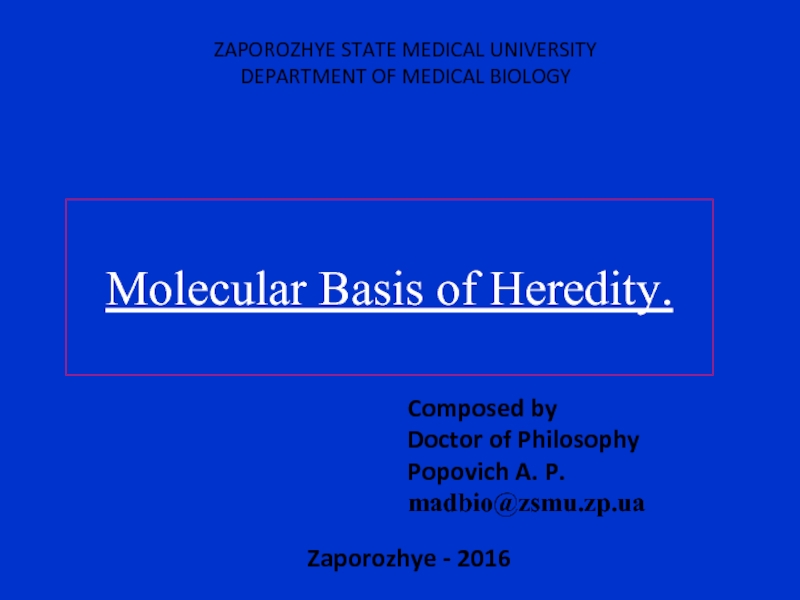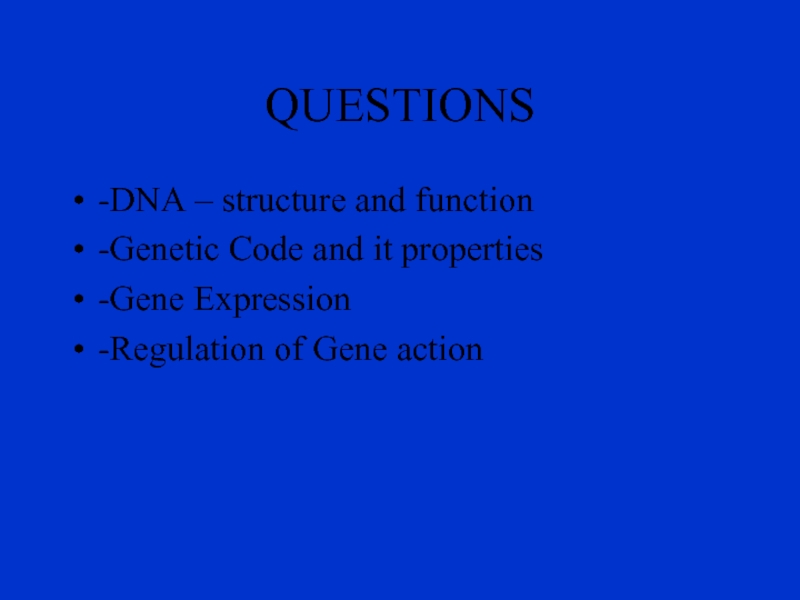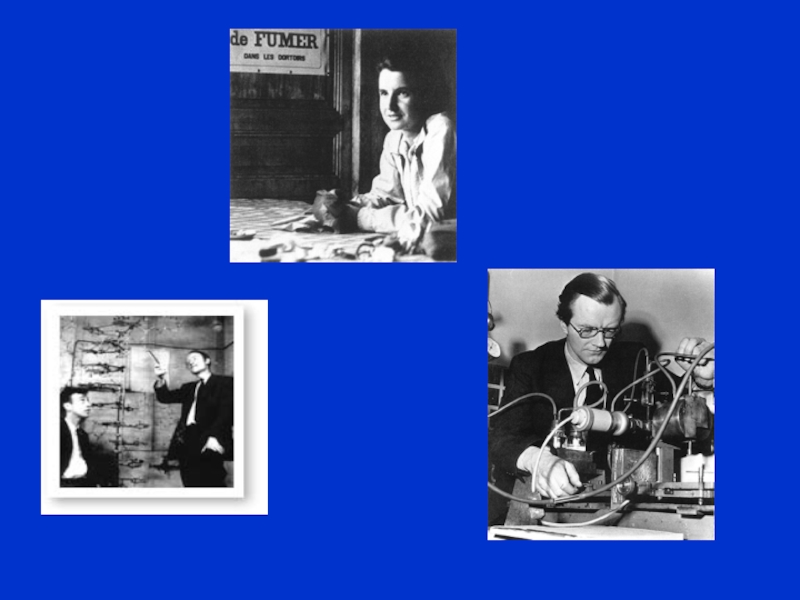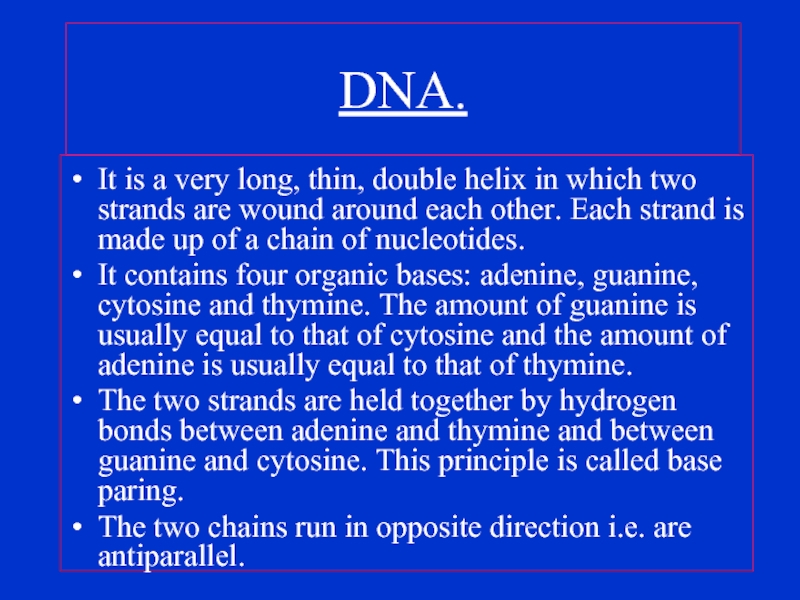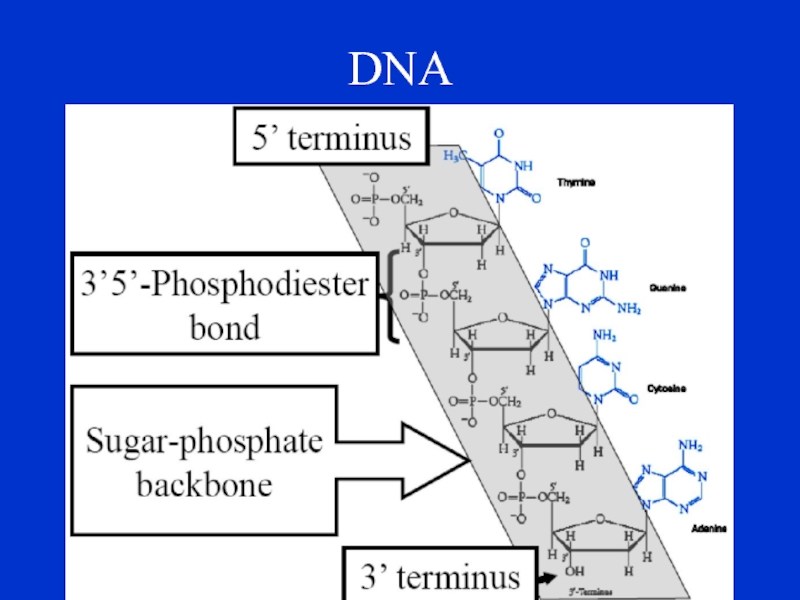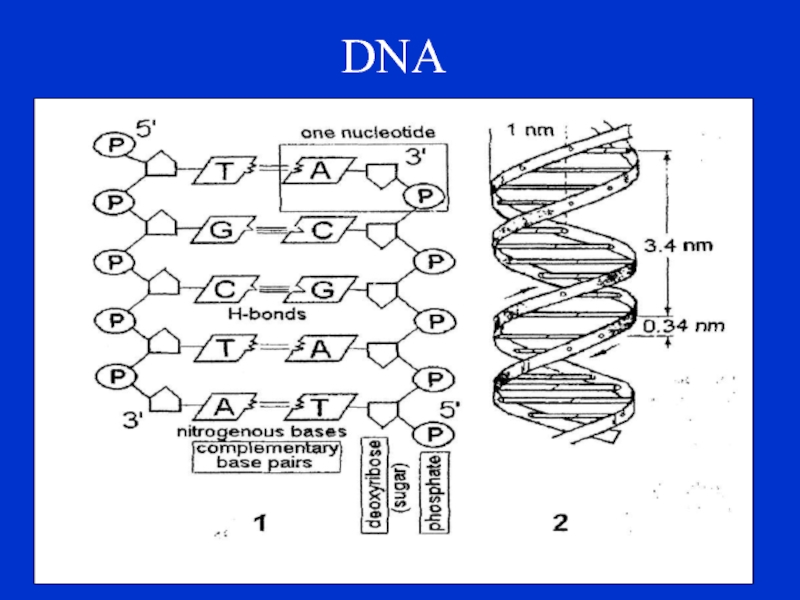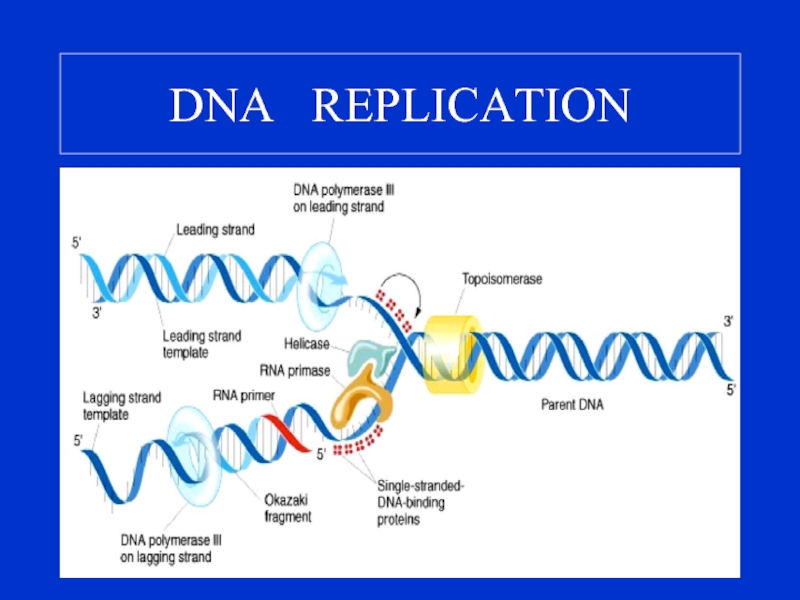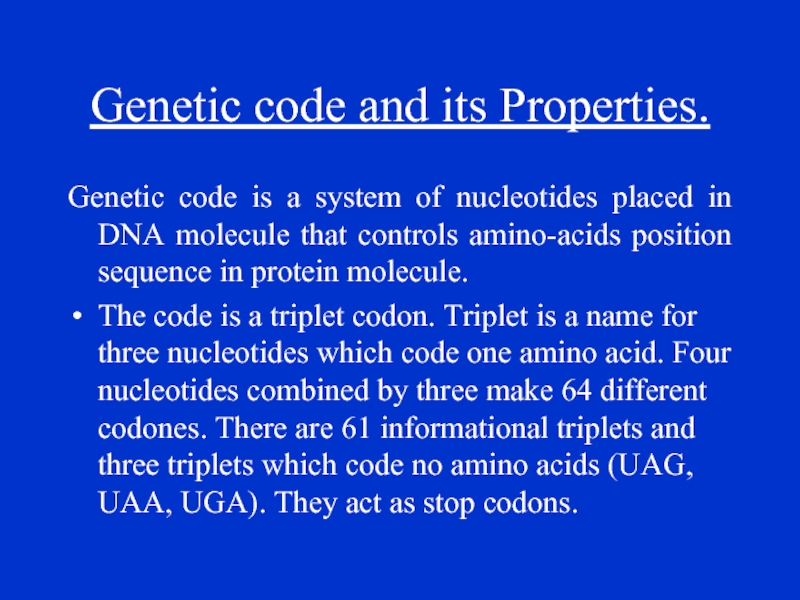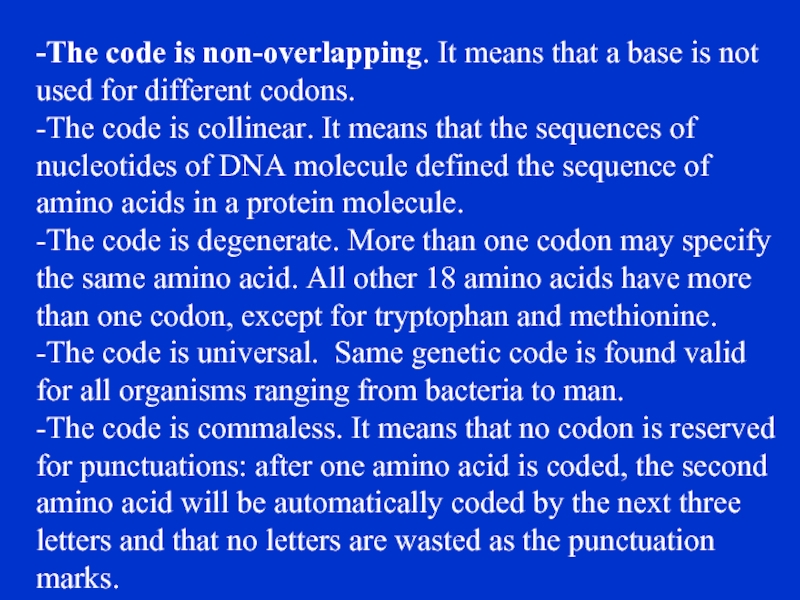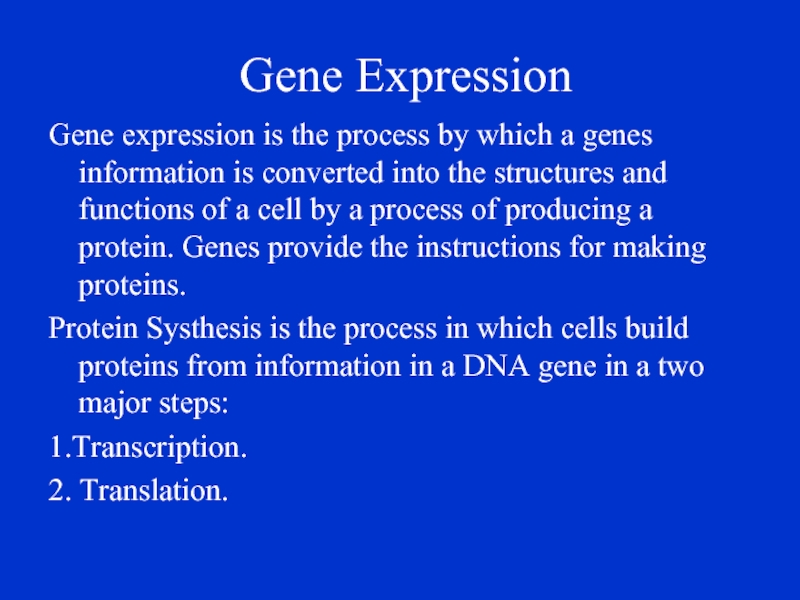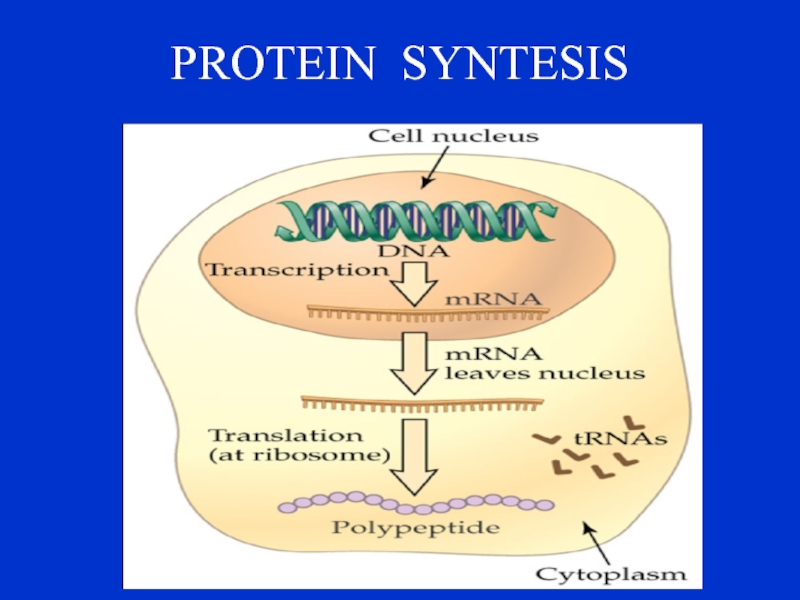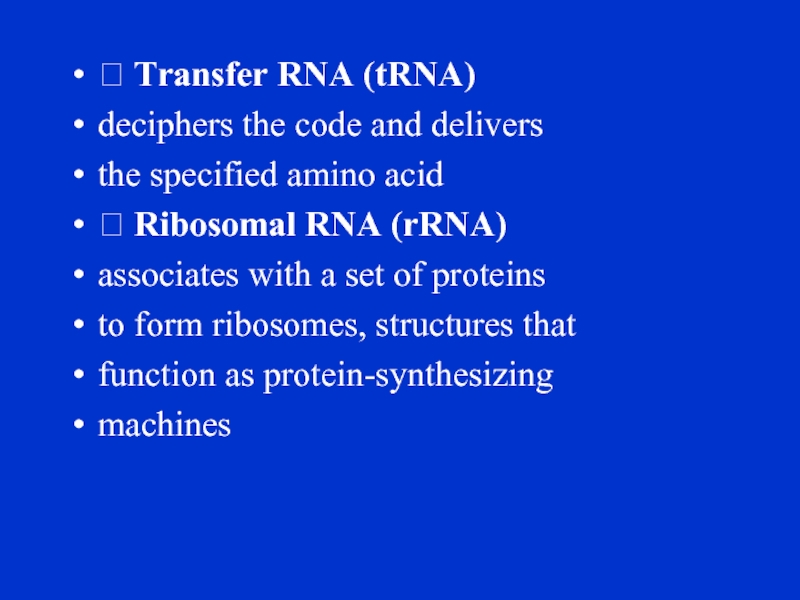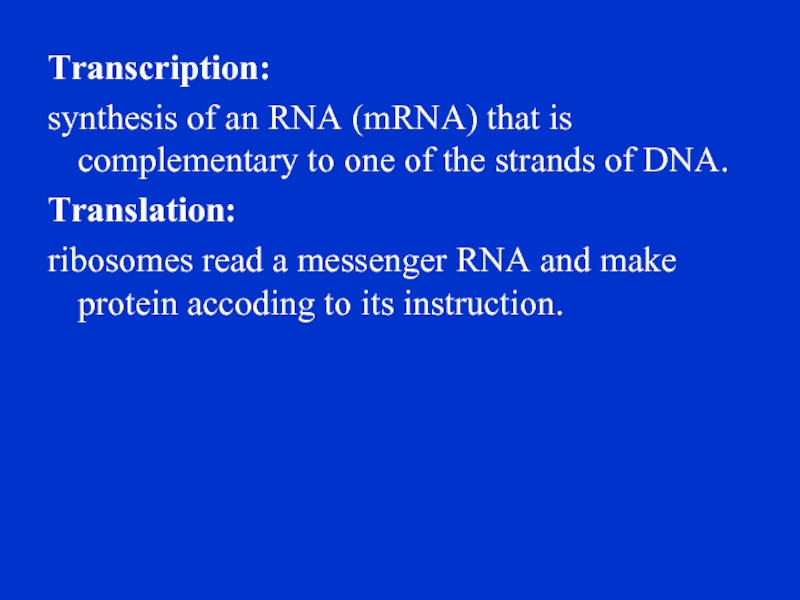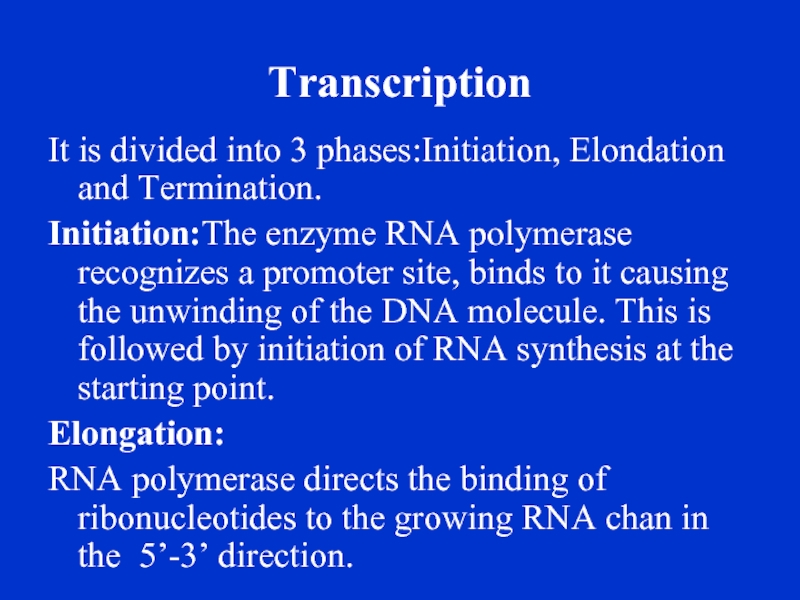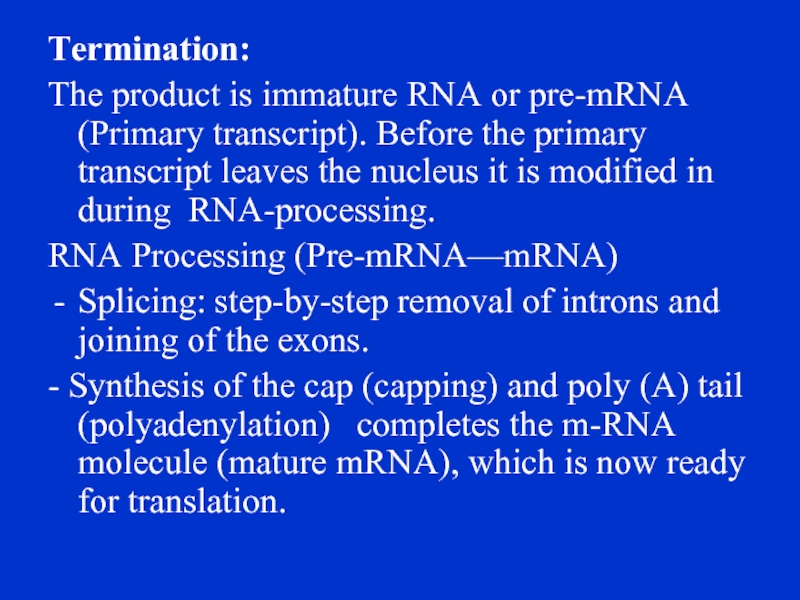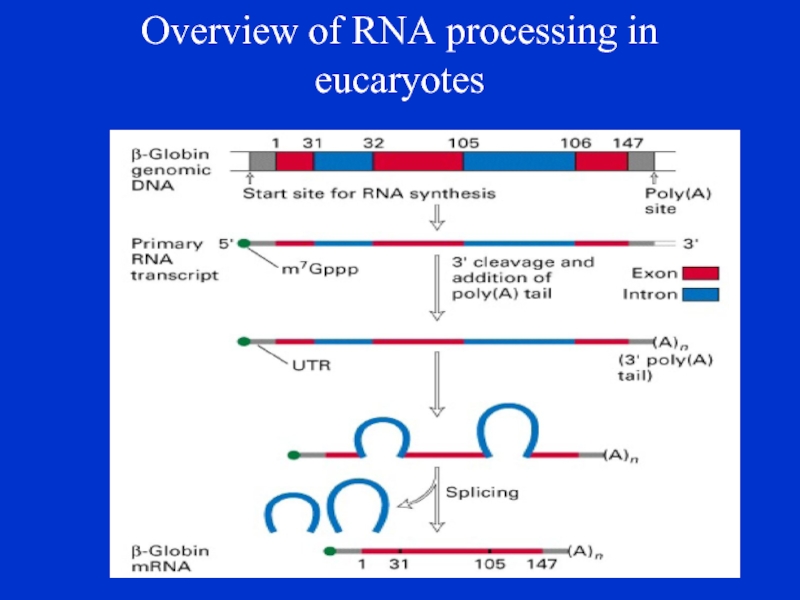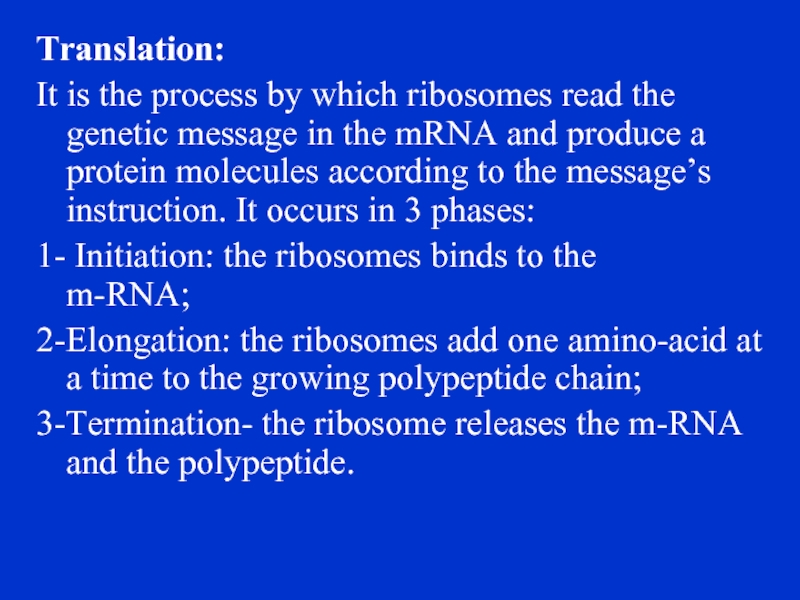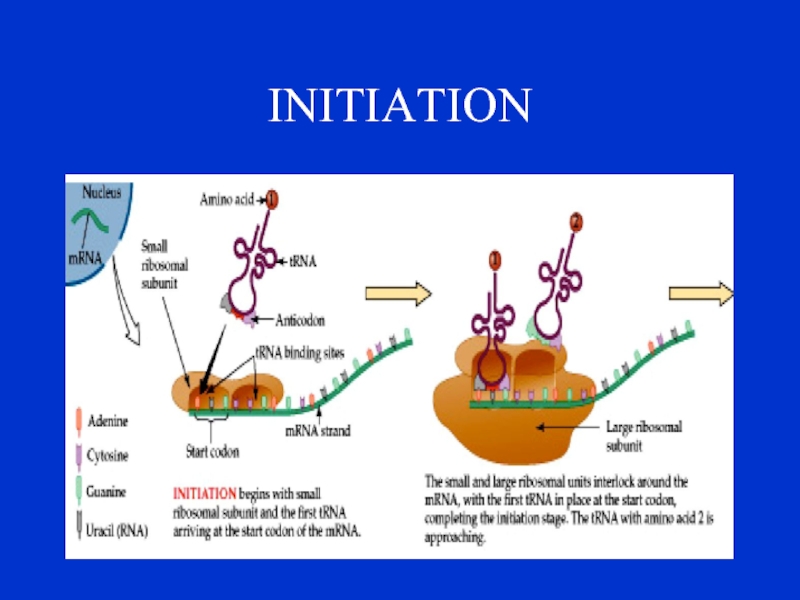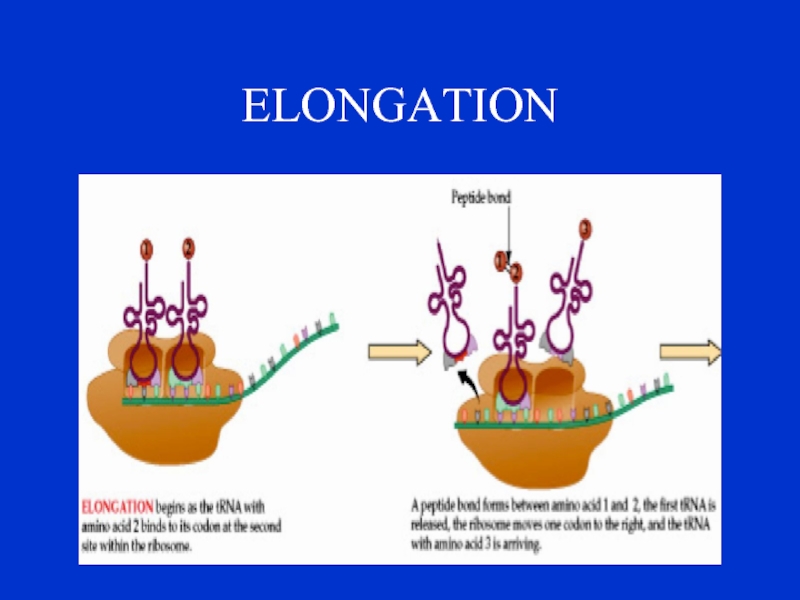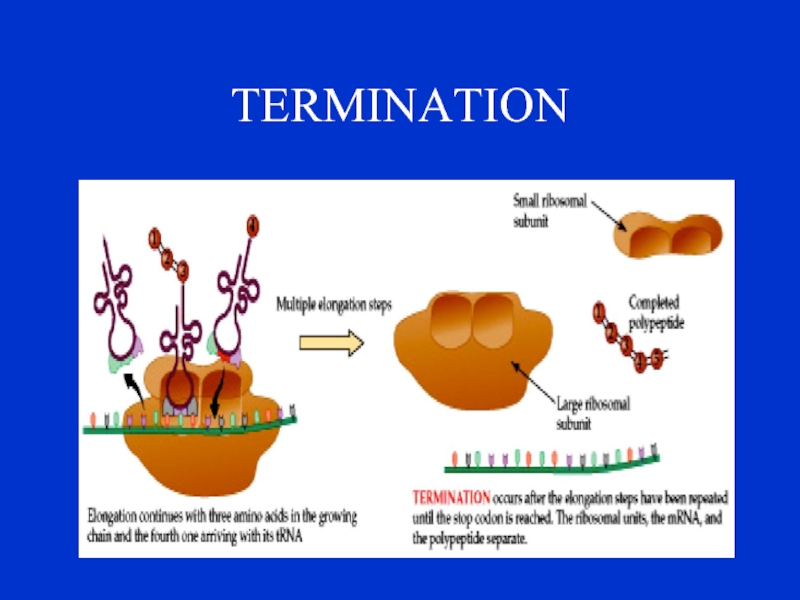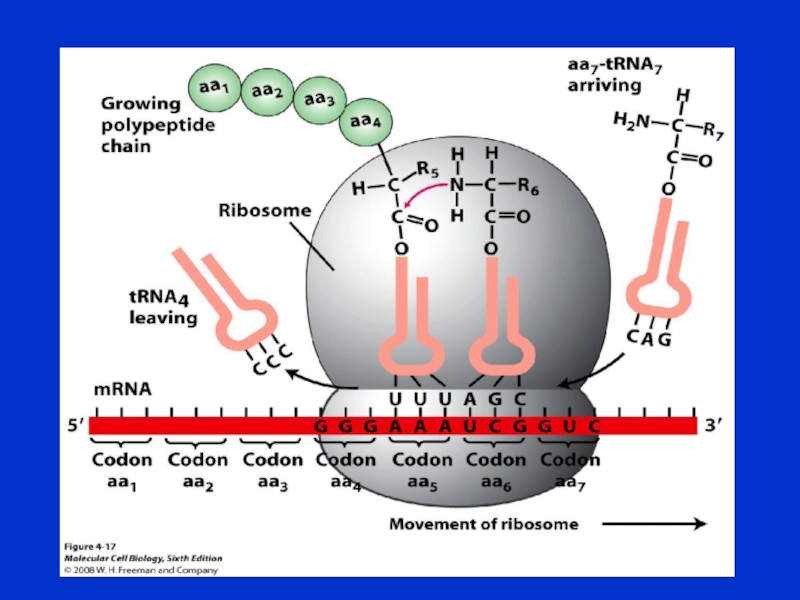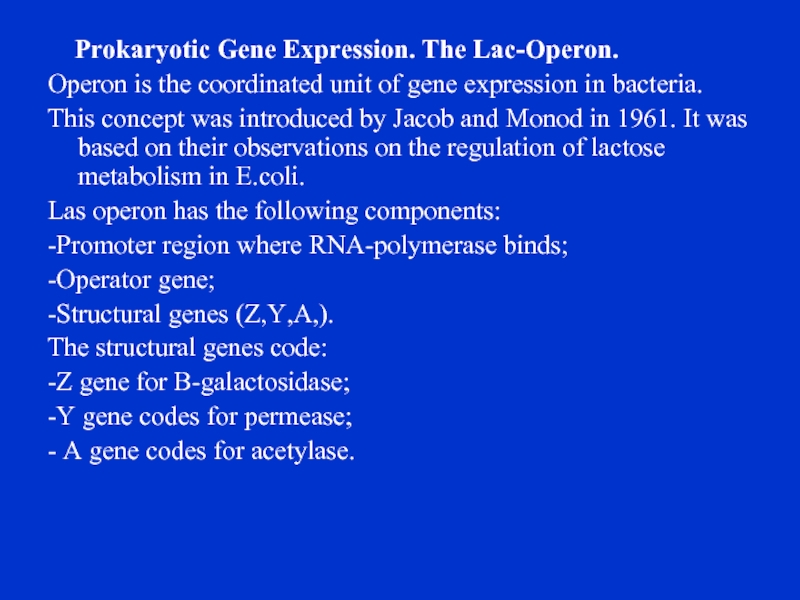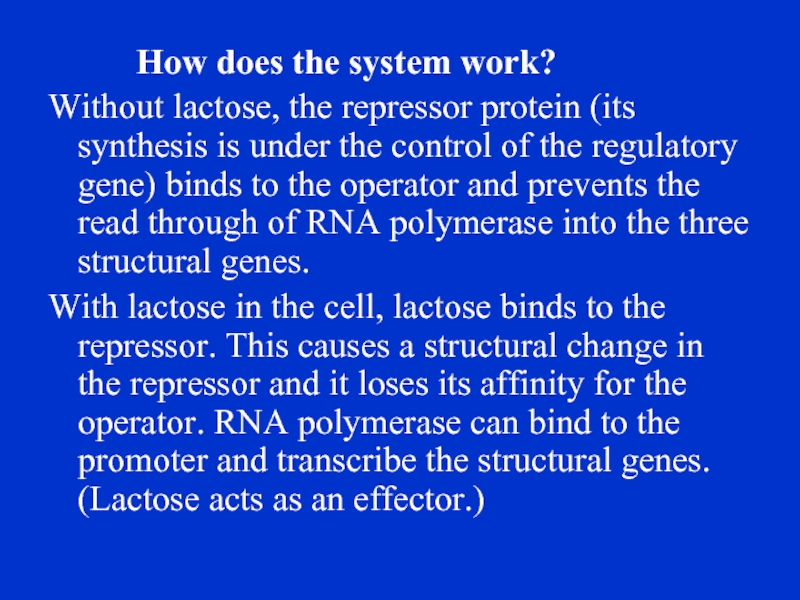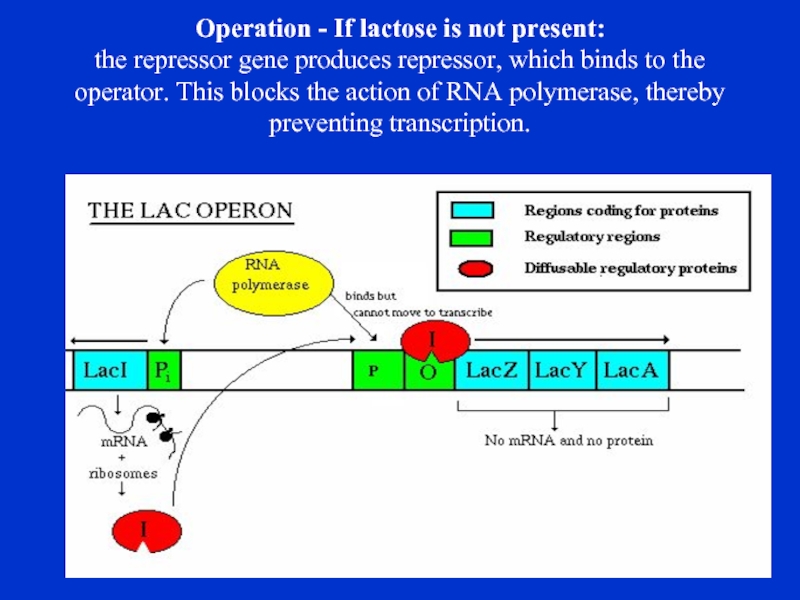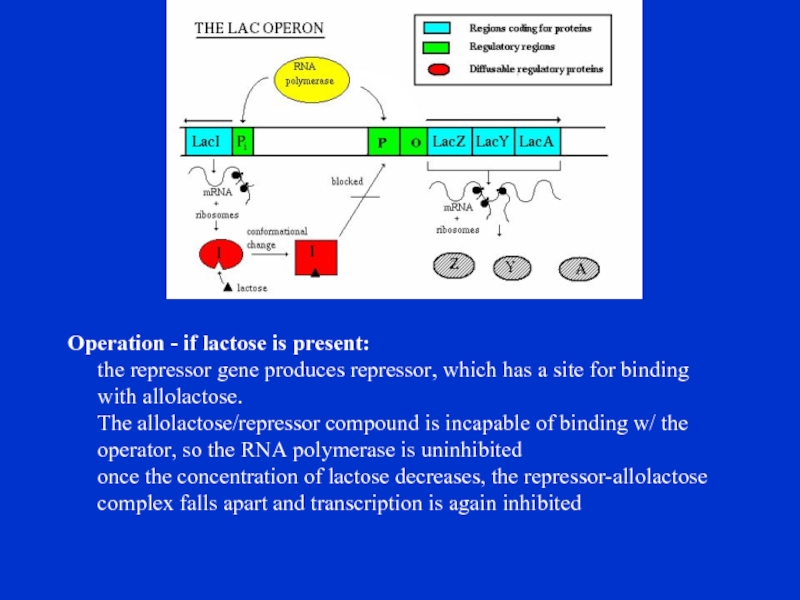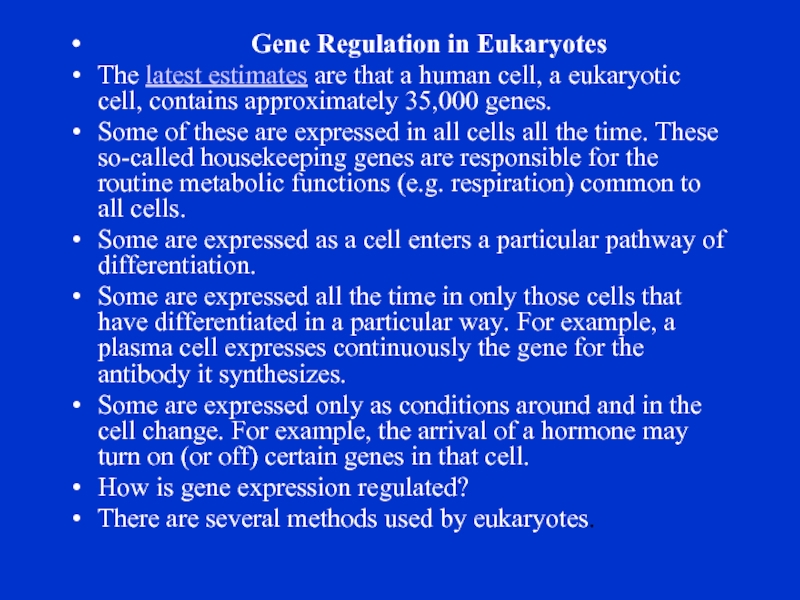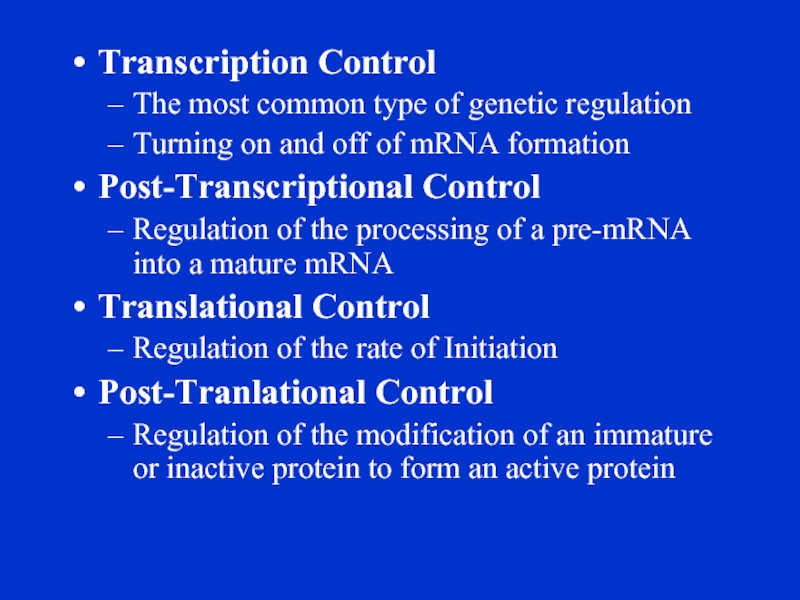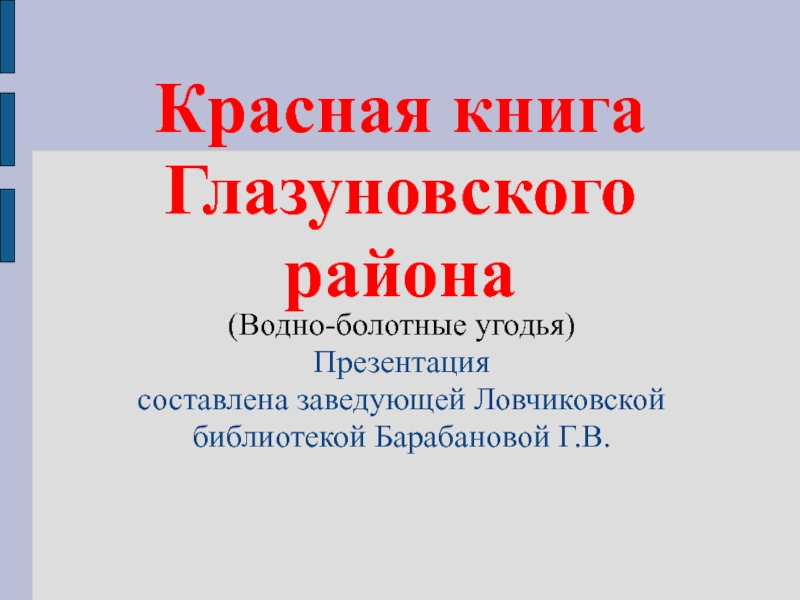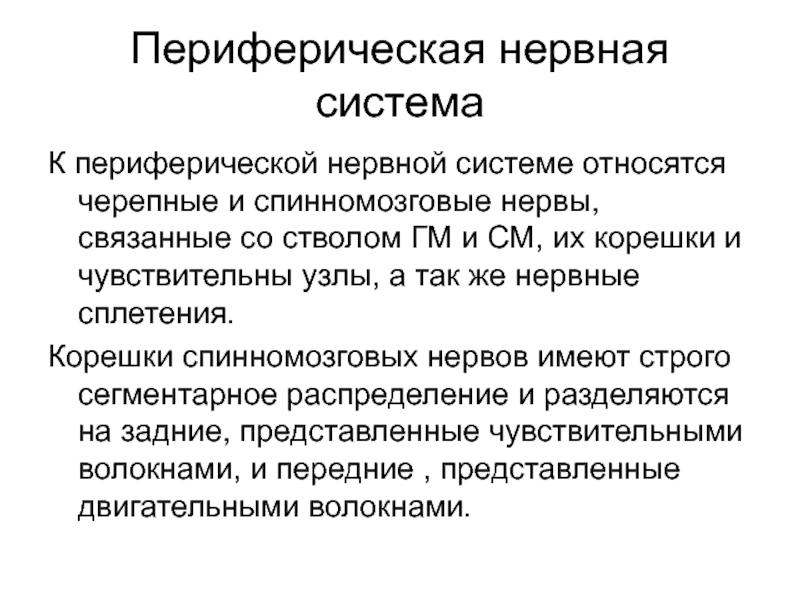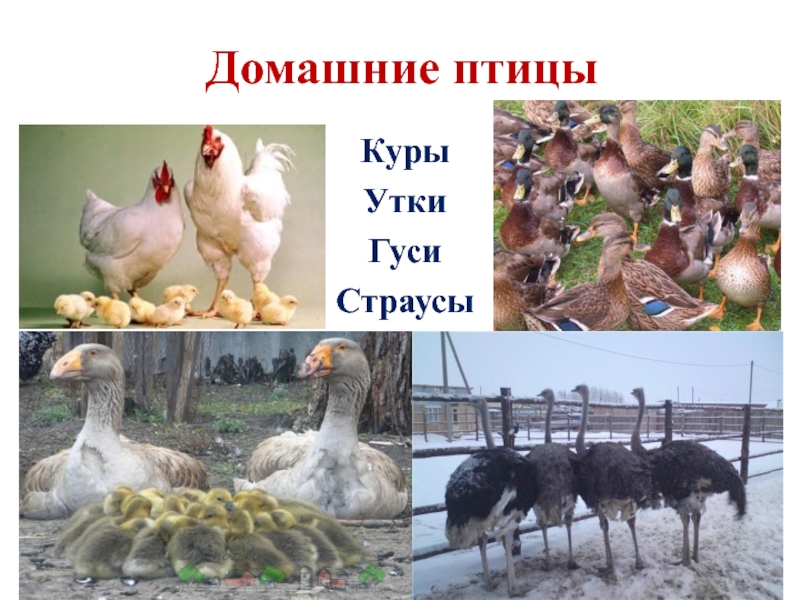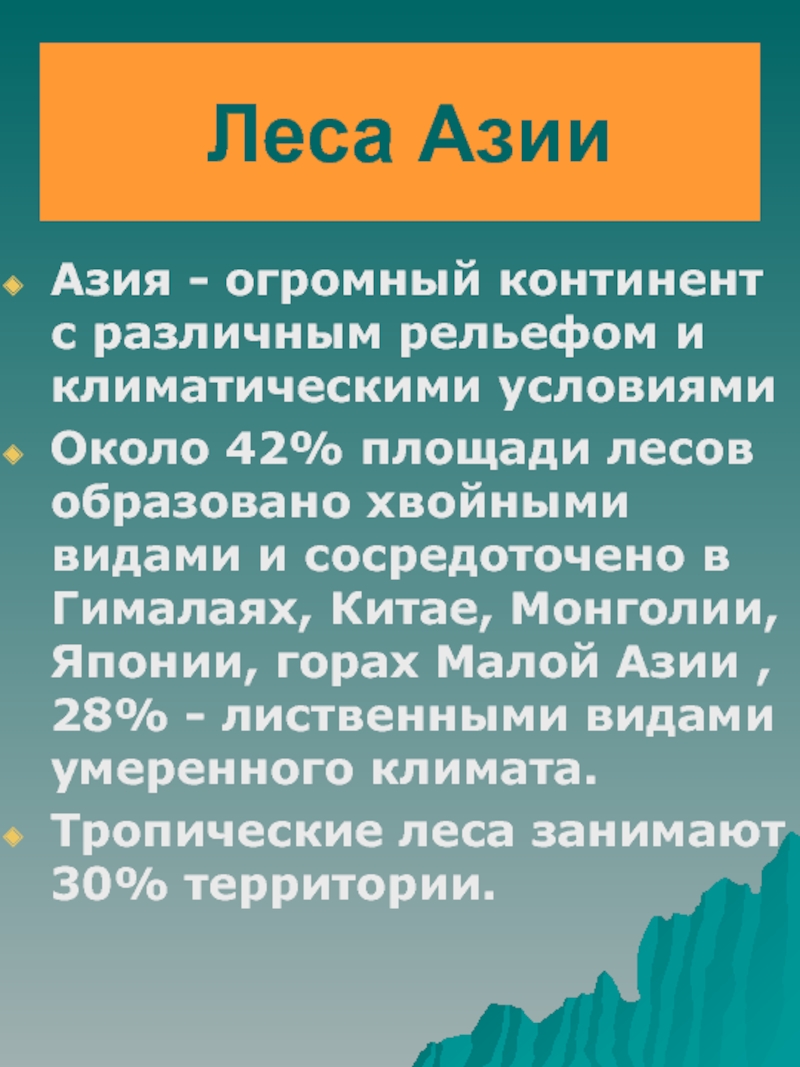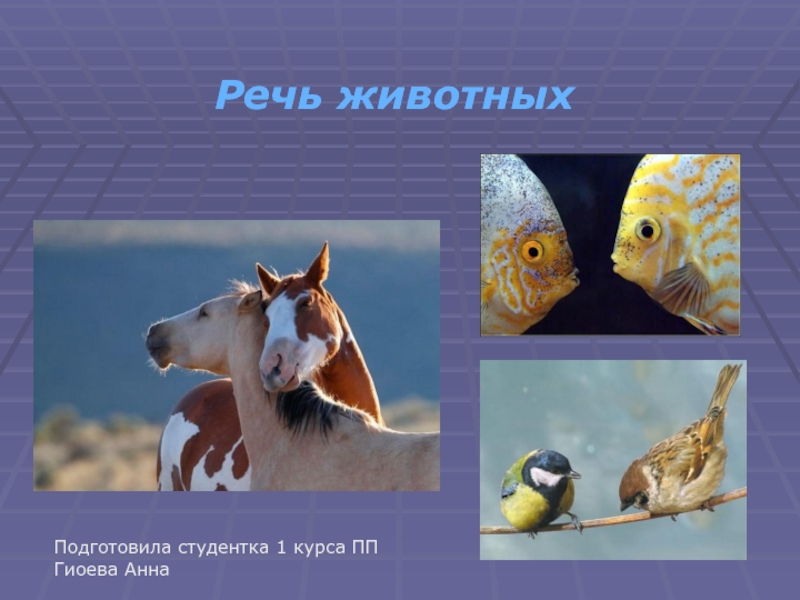STATE MEDICAL UNIVERSITY
DEPARTMENT OF MEDICAL BIOLOGY
- Главная
- Разное
- Дизайн
- Бизнес и предпринимательство
- Аналитика
- Образование
- Развлечения
- Красота и здоровье
- Финансы
- Государство
- Путешествия
- Спорт
- Недвижимость
- Армия
- Графика
- Культурология
- Еда и кулинария
- Лингвистика
- Английский язык
- Астрономия
- Алгебра
- Биология
- География
- Детские презентации
- Информатика
- История
- Литература
- Маркетинг
- Математика
- Медицина
- Менеджмент
- Музыка
- МХК
- Немецкий язык
- ОБЖ
- Обществознание
- Окружающий мир
- Педагогика
- Русский язык
- Технология
- Физика
- Философия
- Химия
- Шаблоны, картинки для презентаций
- Экология
- Экономика
- Юриспруденция
Molecular basis of heredity презентация
Содержание
- 1. Molecular basis of heredity
- 2. QUESTIONS -DNA – structure and function -Genetic
- 4. DNA. It is a very long, thin,
- 5. DNA
- 6. DNA The largest and most complex
- 7. DNA REPLICATION
- 8. Genetic code and its Properties. Genetic code
- 9. -The code is non-overlapping. It means that
- 10. Gene Expression Gene expression is the process
- 11. PROTEIN SYNTESIS
- 12. The three roles of RNA in protein
- 13. ? Transfer RNA (tRNA) deciphers the code
- 14. Transcription: synthesis of an RNA (mRNA) that
- 15. Transcription It is divided into 3 phases:Initiation,
- 16. Termination: The product is immature RNA or
- 17. Overview of RNA processing in eucaryotes
- 18. Translation: It is the process by which
- 19. INITIATION
- 20. ELONGATION
- 21. TERMINATION
- 23. Prokaryotic Gene Expression. The Lac-Operon.
- 24. How does
- 25. Operation - If lactose is not present:
- 26. Operation - if lactose is present: the
- 28. Transcription Control The most common type
Слайд 1Molecular Basis of Heredity.
Zaporozhye - 2016
Composed by
Doctor of Philosophy
Popovich A. P.
madbio@zsmu.zp.ua
ZAPOROZHYE
Слайд 2QUESTIONS
-DNA – structure and function
-Genetic Code and it properties
-Gene Expression
-Regulation of
Gene action
Слайд 4DNA.
It is a very long, thin, double helix in which two
strands are wound around each other. Each strand is made up of a chain of nucleotides.
It contains four organic bases: adenine, guanine, cytosine and thymine. The amount of guanine is usually equal to that of cytosine and the amount of adenine is usually equal to that of thymine.
The two strands are held together by hydrogen bonds between adenine and thymine and between guanine and cytosine. This principle is called base paring.
The two chains run in opposite direction i.e. are antiparallel.
It contains four organic bases: adenine, guanine, cytosine and thymine. The amount of guanine is usually equal to that of cytosine and the amount of adenine is usually equal to that of thymine.
The two strands are held together by hydrogen bonds between adenine and thymine and between guanine and cytosine. This principle is called base paring.
The two chains run in opposite direction i.e. are antiparallel.
Слайд 6DNA
The largest and most complex level is the biosphere. The smallest
level is the molecules that make up living things.
Слайд 8Genetic code and its Properties.
Genetic code is a system of nucleotides
placed in DNA molecule that controls amino-acids position sequence in protein molecule.
The code is a triplet codon. Triplet is a name for three nucleotides which code one amino acid. Four nucleotides combined by three make 64 different codones. There are 61 informational triplets and three triplets which code no amino acids (UAG, UAA, UGA). They act as stop codons.
The code is a triplet codon. Triplet is a name for three nucleotides which code one amino acid. Four nucleotides combined by three make 64 different codones. There are 61 informational triplets and three triplets which code no amino acids (UAG, UAA, UGA). They act as stop codons.
Слайд 9-The code is non-overlapping. It means that a base is not
used for different codons.
-The code is collinear. It means that the sequences of nucleotides of DNA molecule defined the sequence of amino acids in a protein molecule.
-The code is degenerate. More than one codon may specify the same amino acid. All other 18 amino acids have more than one codon, except for tryptophan and methionine.
-The code is universal. Same genetic code is found valid for all organisms ranging from bacteria to man.
-The code is commaless. It means that no codon is reserved for punctuations: after one amino acid is coded, the second amino acid will be automatically coded by the next three letters and that no letters are wasted as the punctuation marks.
-The code is collinear. It means that the sequences of nucleotides of DNA molecule defined the sequence of amino acids in a protein molecule.
-The code is degenerate. More than one codon may specify the same amino acid. All other 18 amino acids have more than one codon, except for tryptophan and methionine.
-The code is universal. Same genetic code is found valid for all organisms ranging from bacteria to man.
-The code is commaless. It means that no codon is reserved for punctuations: after one amino acid is coded, the second amino acid will be automatically coded by the next three letters and that no letters are wasted as the punctuation marks.
Слайд 10Gene Expression
Gene expression is the process by which a genes information
is converted into the structures and functions of a cell by a process of producing a protein. Genes provide the instructions for making proteins.
Protein Systhesis is the process in which cells build proteins from information in a DNA gene in a two major steps:
1.Transcription.
2. Translation.
Protein Systhesis is the process in which cells build proteins from information in a DNA gene in a two major steps:
1.Transcription.
2. Translation.
Слайд 12The three roles of RNA in protein synthesis
? Three types of
RNA molecules
perform different but
complementary roles in
protein synthesis (translation)
? Messenger RNA (mRNA)
carries information copied from
DNA in the form of a series of
three base “words” termed codons
perform different but
complementary roles in
protein synthesis (translation)
? Messenger RNA (mRNA)
carries information copied from
DNA in the form of a series of
three base “words” termed codons
Слайд 13? Transfer RNA (tRNA)
deciphers the code and delivers
the specified amino acid
?
Ribosomal RNA (rRNA)
associates with a set of proteins
to form ribosomes, structures that
function as protein-synthesizing
machines
associates with a set of proteins
to form ribosomes, structures that
function as protein-synthesizing
machines
Слайд 14Transcription:
synthesis of an RNA (mRNA) that is complementary to one of
the strands of DNA.
Translation:
ribosomes read a messenger RNA and make protein accoding to its instruction.
Translation:
ribosomes read a messenger RNA and make protein accoding to its instruction.
Слайд 15Transcription
It is divided into 3 phases:Initiation, Elondation and Termination.
Initiation:The enzyme RNA
polymerase recognizes a promoter site, binds to it causing the unwinding of the DNA molecule. This is followed by initiation of RNA synthesis at the starting point.
Elongation:
RNA polymerase directs the binding of ribonucleotides to the growing RNA chan in the 5’-3’ direction.
Elongation:
RNA polymerase directs the binding of ribonucleotides to the growing RNA chan in the 5’-3’ direction.
Слайд 16Termination:
The product is immature RNA or pre-mRNA (Primary transcript). Before the
primary transcript leaves the nucleus it is modified in during RNA-processing.
RNA Processing (Pre-mRNA—mRNA)
Splicing: step-by-step removal of introns and joining of the exons.
- Synthesis of the cap (capping) and poly (A) tail (polyadenylation) completes the m-RNA molecule (mature mRNA), which is now ready for translation.
RNA Processing (Pre-mRNA—mRNA)
Splicing: step-by-step removal of introns and joining of the exons.
- Synthesis of the cap (capping) and poly (A) tail (polyadenylation) completes the m-RNA molecule (mature mRNA), which is now ready for translation.
Слайд 18Translation:
It is the process by which ribosomes read the genetic message
in the mRNA and produce a protein molecules according to the message’s instruction. It occurs in 3 phases:
1- Initiation: the ribosomes binds to the m-RNA;
2-Elongation: the ribosomes add one amino-acid at a time to the growing polypeptide chain;
3-Termination- the ribosome releases the m-RNA and the polypeptide.
1- Initiation: the ribosomes binds to the m-RNA;
2-Elongation: the ribosomes add one amino-acid at a time to the growing polypeptide chain;
3-Termination- the ribosome releases the m-RNA and the polypeptide.
Слайд 23 Prokaryotic Gene Expression. The Lac-Operon.
Operon is the coordinated unit
of gene expression in bacteria.
This concept was introduced by Jacob and Monod in 1961. It was based on their observations on the regulation of lactose metabolism in E.coli.
Las operon has the following components:
-Promoter region where RNA-polymerase binds;
-Operator gene;
-Structural genes (Z,Y,A,).
The structural genes code:
-Z gene for B-galactosidase;
-Y gene codes for permease;
- A gene codes for acetylase.
This concept was introduced by Jacob and Monod in 1961. It was based on their observations on the regulation of lactose metabolism in E.coli.
Las operon has the following components:
-Promoter region where RNA-polymerase binds;
-Operator gene;
-Structural genes (Z,Y,A,).
The structural genes code:
-Z gene for B-galactosidase;
-Y gene codes for permease;
- A gene codes for acetylase.
Слайд 24 How does the system work?
Without lactose,
the repressor protein (its synthesis is under the control of the regulatory gene) binds to the operator and prevents the read through of RNA polymerase into the three structural genes.
With lactose in the cell, lactose binds to the repressor. This causes a structural change in the repressor and it loses its affinity for the operator. RNA polymerase can bind to the promoter and transcribe the structural genes. (Lactose acts as an effector.)
With lactose in the cell, lactose binds to the repressor. This causes a structural change in the repressor and it loses its affinity for the operator. RNA polymerase can bind to the promoter and transcribe the structural genes. (Lactose acts as an effector.)
Слайд 25Operation - If lactose is not present: the repressor gene produces repressor,
which binds to the operator. This blocks the action of RNA polymerase, thereby preventing transcription.
Слайд 26Operation - if lactose is present: the repressor gene produces repressor, which
has a site for binding with allolactose.
The allolactose/repressor compound is incapable of binding w/ the operator, so the RNA polymerase is uninhibited
once the concentration of lactose decreases, the repressor-allolactose complex falls apart and transcription is again inhibited
Слайд 27
Gene Regulation in Eukaryotes
The latest estimates are that a human cell, a eukaryotic cell, contains approximately 35,000 genes.
Some of these are expressed in all cells all the time. These so-called housekeeping genes are responsible for the routine metabolic functions (e.g. respiration) common to all cells.
Some are expressed as a cell enters a particular pathway of differentiation.
Some are expressed all the time in only those cells that have differentiated in a particular way. For example, a plasma cell expresses continuously the gene for the antibody it synthesizes.
Some are expressed only as conditions around and in the cell change. For example, the arrival of a hormone may turn on (or off) certain genes in that cell.
How is gene expression regulated?
There are several methods used by eukaryotes.
The latest estimates are that a human cell, a eukaryotic cell, contains approximately 35,000 genes.
Some of these are expressed in all cells all the time. These so-called housekeeping genes are responsible for the routine metabolic functions (e.g. respiration) common to all cells.
Some are expressed as a cell enters a particular pathway of differentiation.
Some are expressed all the time in only those cells that have differentiated in a particular way. For example, a plasma cell expresses continuously the gene for the antibody it synthesizes.
Some are expressed only as conditions around and in the cell change. For example, the arrival of a hormone may turn on (or off) certain genes in that cell.
How is gene expression regulated?
There are several methods used by eukaryotes.
Слайд 28Transcription Control
The most common type of genetic regulation
Turning on
and off of mRNA formation
Post-Transcriptional Control
Regulation of the processing of a pre-mRNA into a mature mRNA
Translational Control
Regulation of the rate of Initiation
Post-Tranlational Control
Regulation of the modification of an immature or inactive protein to form an active protein
Post-Transcriptional Control
Regulation of the processing of a pre-mRNA into a mature mRNA
Translational Control
Regulation of the rate of Initiation
Post-Tranlational Control
Regulation of the modification of an immature or inactive protein to form an active protein
